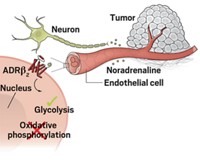Advertisement
Grab your lab coat. Let's get started
Welcome!
Welcome!
Create an account below to get 6 C&EN articles per month, receive newsletters and more - all free.
It seems this is your first time logging in online. Please enter the following information to continue.
As an ACS member you automatically get access to this site. All we need is few more details to create your reading experience.
Not you? Sign in with a different account.
Not you? Sign in with a different account.
ERROR 1
ERROR 1
ERROR 2
ERROR 2
ERROR 2
ERROR 2
ERROR 2
Password and Confirm password must match.
If you have an ACS member number, please enter it here so we can link this account to your membership. (optional)
ERROR 2
ACS values your privacy. By submitting your information, you are gaining access to C&EN and subscribing to our weekly newsletter. We use the information you provide to make your reading experience better, and we will never sell your data to third party members.
Biological Chemistry
Cancer tissue stiffness helps target chemotherapy
Researchers engineer stem cells that convert a prodrug into an active drug when they encounter stiff, metastasizing tumor tissue
by Sarah Everts
July 31, 2017
| A version of this story appeared in
Volume 95, Issue 31

As tumors metastasize, cancer cells within often stiffen up their microenvironment by increasing the production and cross-linking of collagen. This rise in rigidity helps the metastatic cells migrate and invade other regions of the body. Given the dearth of remedies to combat metastatic cancer, researchers led by Weian Zhao of the University of California, Irvine, designed a therapy that targets this surge in stiffness. Previous research had shown that mesenchymal stem cells have a tendency to home in on metastasizing cancer cells. The team also knew that when these stem cells encounter stiff tissue, they differentiate into bone or muscle by activating the expression of certain genes. So Zhao’s team engineered the stem cells to additionally produce an enzyme called cytosine deaminase after they encounter stiff tissue. This enzyme converts the prodrug 5-fluorocytosine into the active anticancer drug 5-fluorouracil. The team showed that in mice, using a metastasizing cancer tissue’s stiffness as a way to activate 5-fluorouracil might be a promising new chemotherapy strategy (Sci. Transl. Med. 2017, DOI: 10.1126/scitranslmed.aan2966).




Join the conversation
Contact the reporter
Submit a Letter to the Editor for publication
Engage with us on Twitter